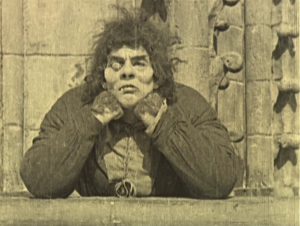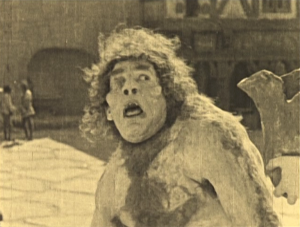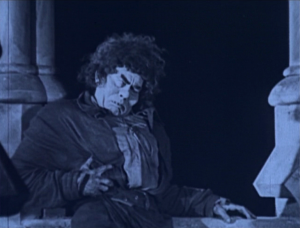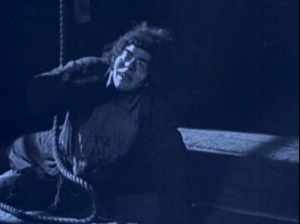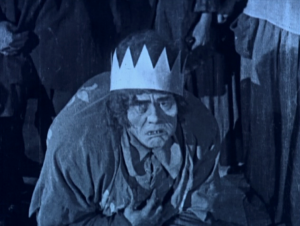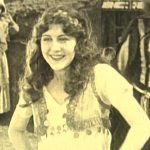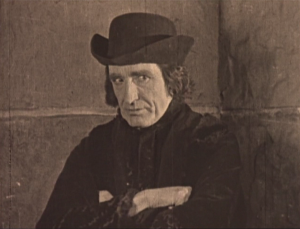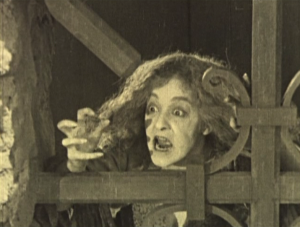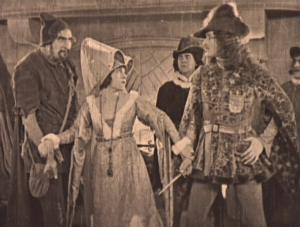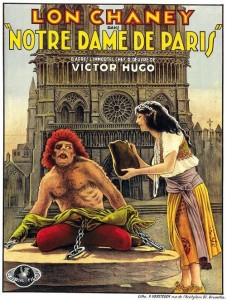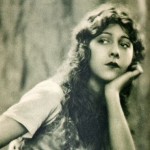The 1923 version of Hunchback of Notre Dame starts and end with Quasimodo but he is not much of a major player in the middle of film, between the pillory scene and saving Esmeralda. But since Lon Chaney gets top billing since it was he’s project Quasimodo is the main character.
Quasimodo in this version is the closet to how he behaves in the book. Quasimodo doesn’t like the people of Paris and this version shows that in Quaismodo’s introductory scene as well as his connection to Notre Dame. You do get the feeling that his Quasimodo wouldn’t have saved Esmeralda if she hadn’t give him water, you get this Quasimodo may have not felt nothing which makes his loyalty to her more meaningful and it gives his character a bit of an arc.
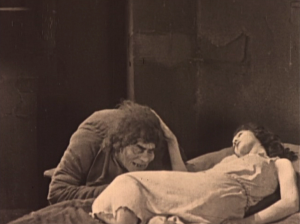
Esmeralda patting Quasimodo on the head Hunchback of Notre Dame 1923 Lon Chaney with Patsy Ruth Miller
However this Quasimodo acts more like a dog that a person. A scene that showcases this perfectly is right after Quasimodo recuses Esmeralda she pats him on the head. This Quasimodo doesn’t see to be in love with Esmeralda he just seems to want to protect her. There doesn’t seem to the selfless love that in is the book and Laughton captured in the 1939 version.
Quasimodo make-up may look outdated but it’s well done by Chaney and accurate to the Book. Also Chaney’s Quasimodo is a lot most acrobatic than other Quasimodos as Chaney was capable of jumping and climbing though stuntmen were used in a few instances but the 23 version is defiantly has most range of movement in a live-action film.
If Quasimodo was meant to be the lead of the film and the emotional heart he does it well to a point. There some emotional confusion at the end of the movie and Quasimodo’s fate. I’m not sure how to feel that Quasimodo dies, sad, happy, bittersweet?
Honestly I can’t gage any emotion from his death and I think that my problem with movie as a whole I don’t get an emotion or a heart of it. It has little vignettes of it but not in terms of a story that is based on a book with a very bittersweet ending.
The 1923 is an odd Quasimodo because everything is there to make an compelling character and the film just misses the mark and makes Quasimodo more into a loyal puppy dog than a tragic hero.
Next Time – The 1923 Version of Esmeralda
Follow thehunchblog
